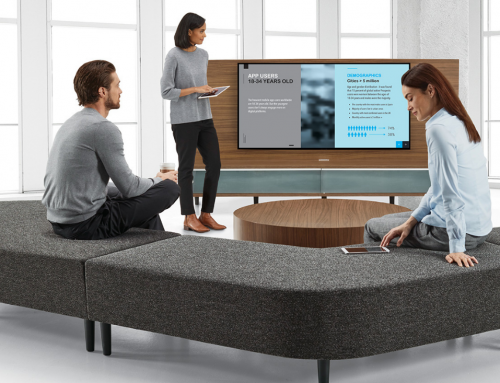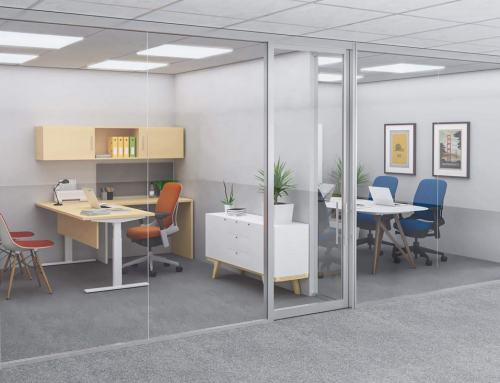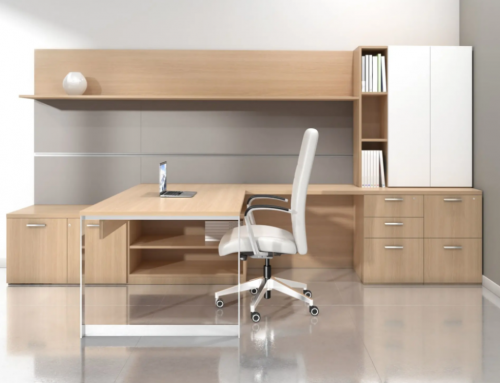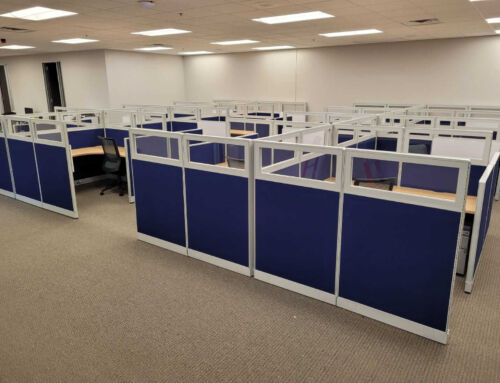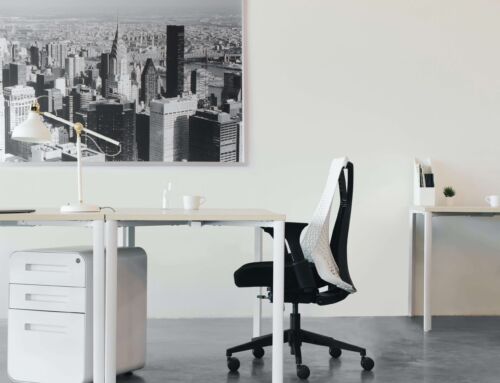How to reduce germ spread in your office.
When the COVID-19 stay-at-home orders lift and communities emerge from quarantine and work-from-home, fears about workplace safety and health will likely linger. In a post-COVID-19 workplace, we will all be more deeply aware of hazards associated with the surfaces we touch and people we interact with after this protracted period of practicing social distancing.
We’ll view the spaces in which we work, live, and play from a different perspective. Is the air in this office filtered? Are there proper handwashing and sanitizing facilities? How many surfaces must I touch, and how clean are they?
In A 2020 report, Guidance on Preparing Workplaces for COVID-19, created by the Occupational Safety and Health Administration along with the Department of Health and Human Services, recommends against people using work tools or equipment shared by others. This means not using things like other people’s pens, laptops, cellphones, tablets, desks, or offices.
If you must use public equipment, like a copy machine or an elevator, be sure to wash your hands afterward, use hand sanitizer, or even both.
Disinfecting vs. Cleaning: Is there a Difference?
Per the CDC’s coronavirus resources, cleaning and disinfecting are different. And both are necessary to limit your exposure to viruses and germs.
Cleaning is the removal of germs and other contaminations from surfaces by using soap and water or other detergents. Cleaning doesn’t kill bacteria, but in removing them, you limit their number, which helps reduce the chances they will spread.
Disinfecting means using chemicals to kill germs on surfaces. Disinfecting won’t remove germs and other contaminations.
The CDC advises cleaning first then disinfecting high-touch, high-traffic areas throughout the day. These include:
- Light switches
- Doorknobs
- Remotes
- Hard-backed chairs
- Handles
- Desks
- Sinks
- Faucets
- Toilets
Cleaning & Disinfecting Your Office
There is a right way and wrong way to clean, particularly when you’re focusing on the removal and killing of viruses and bacteria.
- Don’t use a circular or back and forth motion. This will only redistribute the germs.
- Use paper towels to prevent cross-contamination. Throw them away immediately after cleaning.
- Use up to down motions to wipe surfaces, don’t go back over it in the opposite direction.
- Use an electrostatic disinfecting service
Additionally, the CDC offers the following instructions for cleaning and disinfecting surfaces:
- Wear gloves. If you use reusable gloves for cleaning, don’t use them for any other purpose. Follow the manufacturer’s guidelines to clean and disinfect the gloves.
- Wash your hands immediately after you finish cleaning, even if you wear gloves.
Be mindful of high-touch items that remain on your desk or circulate between your coworkers. As an example, a container of pens can harbor bacteria and viruses if customers or colleagues use them temporarily then return them. Actually wash your reusable water bottle and coffee mug with hot soapy water then dry it entirely at the end of each day. Don’t just rinse it out.
Wipe down supplies like files, books, staplers, and headsets with a disinfecting wipe when someone uses them then returns them to your desk.
Be wary of areas where coworkers commonly come and go, like break rooms or meeting rooms. While these are generally cleaned at the end of each day by the cleaning staff, they can still be hot spots for germs during office hours.
If you must use the breakroom, use hand sanitizer or wash your hands after touching surfaces such as the refrigerator door, tables and chairs, the microwave, and the vending machine.
Electrostatic Disinfecting Service
Applying chemicals using an electrostatic sprayer is both more efficient and effective than spray-and-wipe. Have you ever brushed a balloon on your hair to make it stick to a wall? That’s basic electrostatic charging. In Electrostatic disinfection, special equipment is used to charge the atomized particles of disinfectant with either a positive (+) or negative (-) charge. These electrostatically charged droplets are like magnets to the targeted area. So much that they coat the sides, edges, and backside of surfaces. This wraparound effect produces an even and comprehensive coverage of disinfecting chemicals. This reduces overspray and reduces wasted chemicals providing significant results. Spray-and-wipe is hit-and-miss, leaving entire areas not appropriately disinfected. With electrostatic disinfection, every surface is coated in less time, using less chemical, and with superior outcomes.
We provide this service in the Houston area.
Educate Employees and Coworkers in Proper Hygiene Practices
- Keep your distance. If you must be around others while you believe you may be coming down with something, practice social distancing, including not sharing phones, pens, or snacks.
- DO NOT cover your mouth or nose with your hands. Sick or not, you should always cough or sneeze into your inner arm or a tissue. Coughing and sneezing into your hands can cause germs to spread like crazy through every surface you touch throughout the day.
- Keep hand sanitizer at your desk. Use hand sanitizer before and after you use any shared office supplies or appliances. This will keep you from spreading your germs and will fight off any germs your coworkers might be sharing.
- Wash your hands properly. Briefly running your hands under the water with a squirt of soap really doesn’t do the trick. Learn to wash your hands properly to avoid spreading germs.
- Use disinfecting wipes. Store these at your desk also. If you eat lunch at your desk, be sure to wipe down the area both before and after. You can use your wipes to help sanitize shared workspaces like the break room or office kitchen as well.
- Avoid touching your face. I know it’s hard, but don’t touch your eyes, nose, and mouth throughout the day. Doing so causes germs to spread anytime you touch phones, appliances, or doorknobs in your office. It also increases the likelihood of picking up germs yourself.
- Clean your workspace. A messy or dirty desk gives germs and bacteria a place to live. Clean out any old soda cups and food containers. Make sure properly seal any food kept at your desk.
Everyone needs to work together.
You can easily see how your office can rapidly become a breeding ground for bacteria and viruses, especially if everyone doesn’t practice proper hygiene habits. With the global spread of COVID-19, Attention is justifiably focused on staying healthy and safe during the pandemic.
Simple measures like wiping down commonly touched surfaces and properly washing your hands can go a long way toward keeping everyone healthy and productive while helping stop the spread of viruses that could sicken your customers and colleagues.
For a FREE consultation contact us today!
